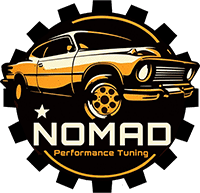From Novice to Pro: Understanding Your Vehicle’s Performance Metrics
Owning a car is not merely about moving from point A to B—it’s about understanding its mechanics, respecting its limits, and appreciating its capabilities. An essential part of this journey is understanding your vehicle’s performance metrics, a knowledge area that seems daunting to many but can be quite enlightening and empowering once you get the hang of it. Today, we at Nomad Performance Tuning will take you on a journey from novice to pro, helping you understand your vehicle’s performance metrics.
Horsepower and Torque
When talking about a car’s power, two terms are frequently used: horsepower and torque. Horsepower is a measure of your car’s power output—it’s the amount of work it can do over time. Torque, on the other hand, is a measure of your car’s rotational force—it determines how quickly your car can do that work.
In simpler terms, torque gets your vehicle moving, and horsepower keeps it moving. High torque at low engine speeds provides strong acceleration, while high horsepower at high engine speeds allows for a higher top speed.
Fuel Efficiency
Fuel efficiency, often measured in miles per gallon (MPG), indicates how effectively your car uses fuel. Higher MPG means your vehicle can travel farther on a given amount of fuel, reducing both your fuel costs and environmental impact. Custom tuning can optimize your vehicle’s fuel efficiency, allowing for better performance without the expense of increased fuel consumption.
Revolutions Per Minute (RPM)
RPM indicates how fast the engine is spinning. Higher RPM usually means higher power output but also greater fuel consumption and engine wear. A well-tuned engine can deliver better performance across a wide RPM range, giving you strong acceleration without needing to push the engine to its limit.
Boost Pressure (for turbocharged engines)
Boost pressure is the extra air pressure generated by a turbocharger or supercharger. More boost means more air in the engine, which can increase power output. However, too much boost can damage the engine. Custom tuning can optimize boost pressure levels for maximum performance without compromising safety and reliability.
Air-Fuel Ratio
The air-fuel ratio (AFR) is the proportion of air to fuel in your engine’s combustion chambers. A balanced AFR can improve power output, fuel efficiency, and emissions. Tuning can optimize the AFR, ensuring optimal combustion and enhanced engine performance.
Conclusion
Understanding your vehicle’s performance metrics can transform you from a novice into a pro, allowing you to better appreciate your vehicle’s capabilities and limitations. At Nomad Performance Tuning, we’re passionate about educating our customers and helping them maximize their vehicles’ potential. If you’re ready to unlock your vehicle’s performance and fuel efficiency, get in touch with us today. We’re here to help you every step of the way.






Leave A Comment
You must be logged in to post a comment.